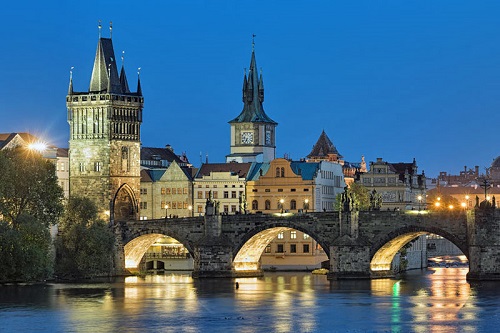 Friday, July 26, 2024
Friday, July 26, 2024  Friday, July 26, 2024
Friday, July 26, 2024 
We’re used to driving across bridges to get from place to place, but have you ever wondered how these ambitious architectural Goliaths were first created? Engineering and Architecture dives into the how with an eye-opening animation that demonstrates the construction of the Charles Bridge in Prague from 1357-1402. The bridge is part of an iconic composition across the Vltava (Moldau) river in the popular Czech Republic city. Spanning nearly 1,700 feet and over 33 feet wide, it is a popular tourist destination and holds high historical significance for the city.
The video itself cleverly breaks down the nearly 50-year-long construction process of the Charles Bridge. First, we see the execution of individual footings in the water, from preliminary structural elements to the draining of water from the interior of the footing. It later zooms out from the individual footings and explains the bridging across each element.
These arches are supported by temporary wooden frameworks used for the creation of perfect brick arches. A pulley system is used to lift supplies from boats waiting beneath the structure. Impressive piles of stone and other materials create the infill for all elements. Once the footings and arches are completed, the animation demonstrates the infill and pavement used for the top walking surface of the bridge. Finally, the animation zooms out to the completed box bridge—an impressive structure of 16 arches.
Keep reading on MyModernMet.com